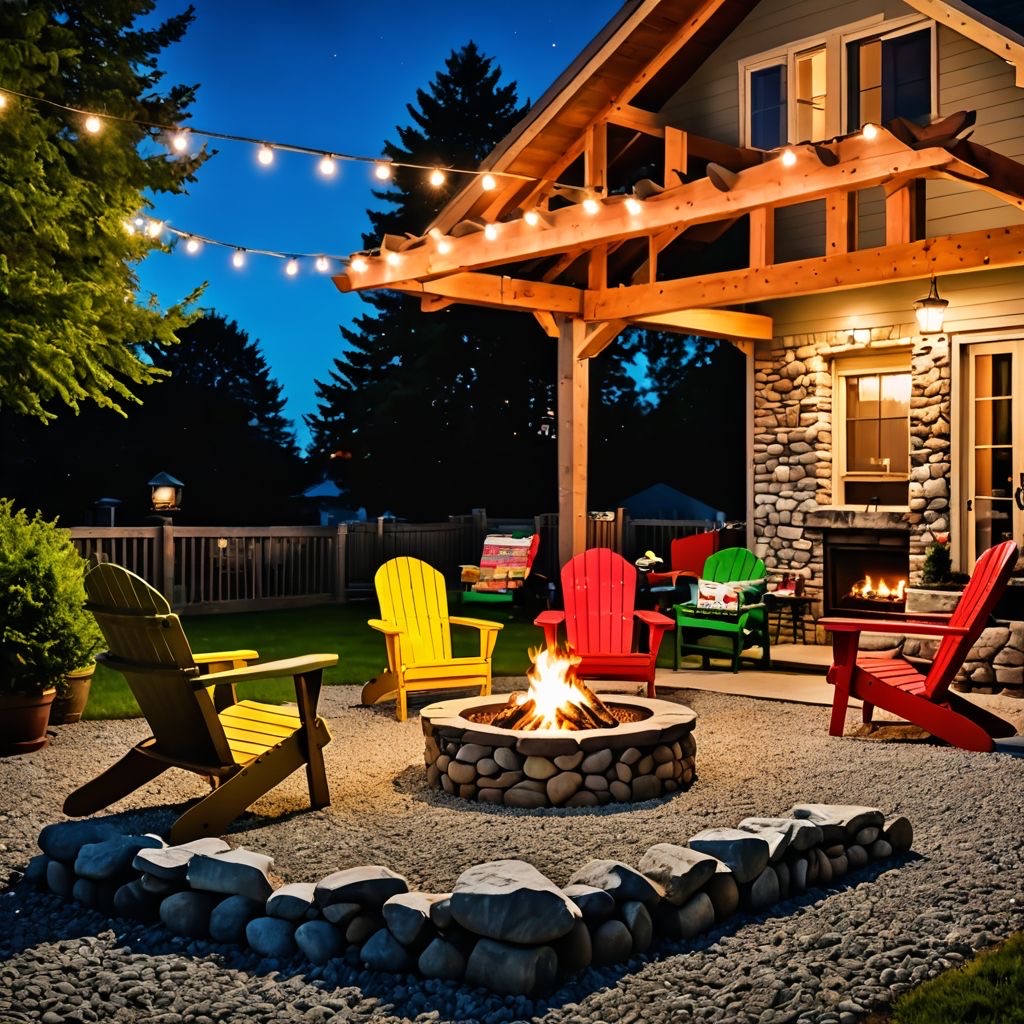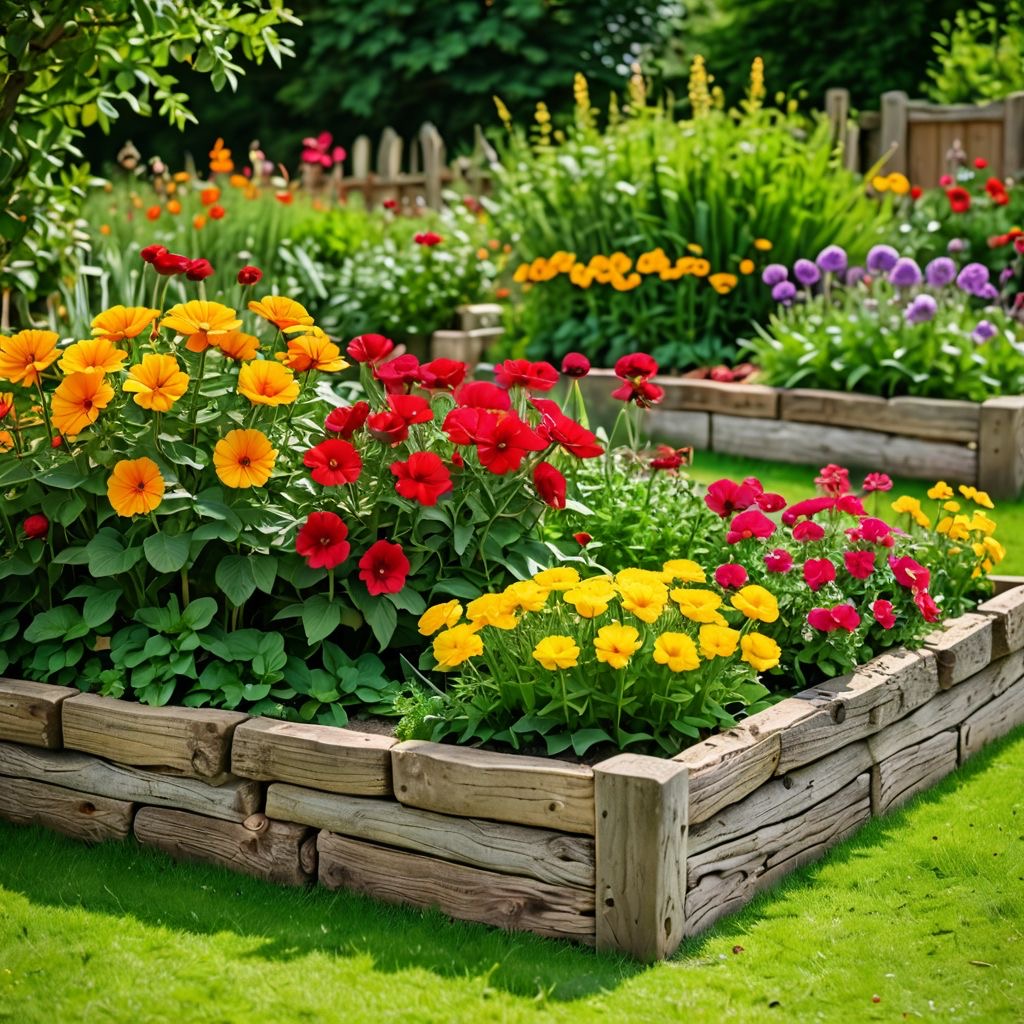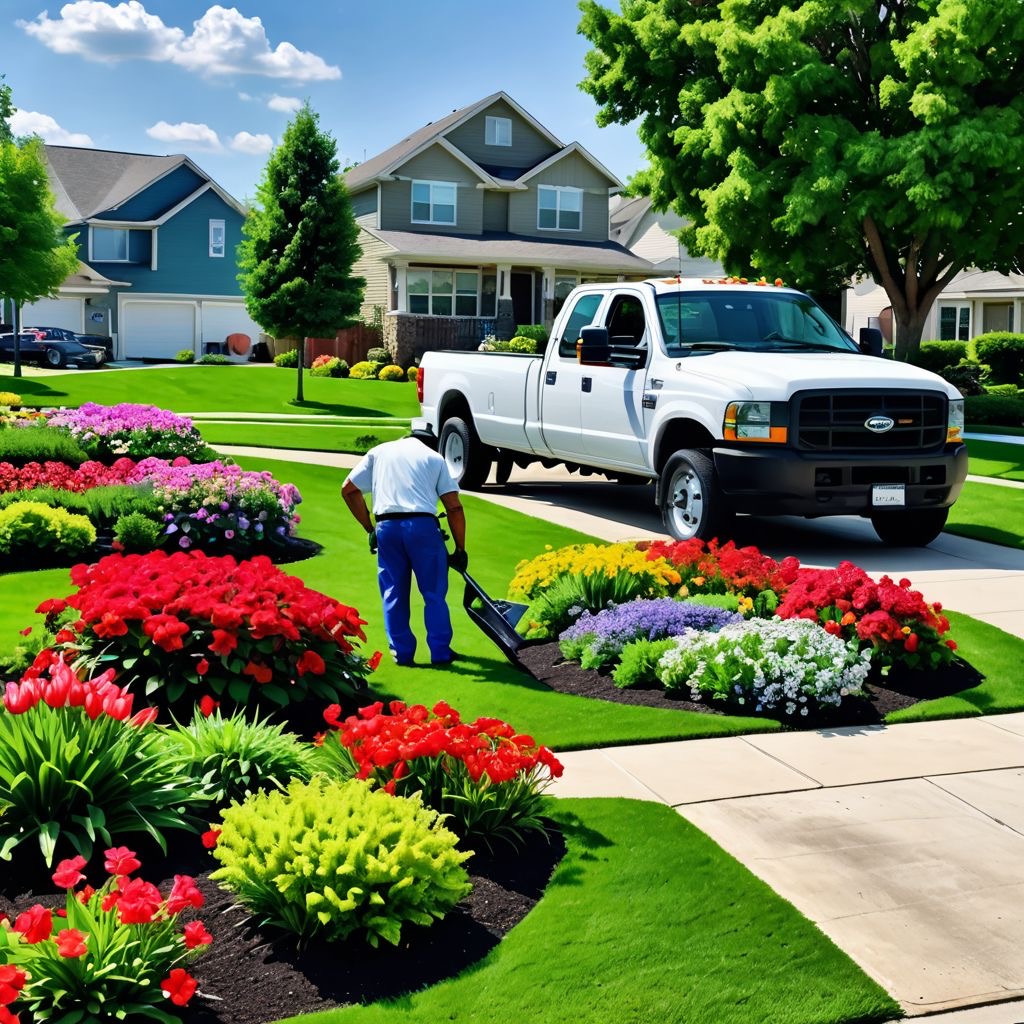
Table of Contents:
1. Introduction
2. Understanding Minimalism in Landscaping
- 2.1 What Does it Mean?
- 2.2 Benefits of Minimalist in Your Winnipeg Landscape Design
3. Planning Your Minimalist Outdoor Space
- 3.1 Assessing Your Space
- 3.2 Defining Your Style
- 3.3 Choosing the Right Color Palette
4. Key Elements of Minimalist Landscaping
- 4.1 Simplifying Plant Choices
- 4.2 Incorporating Hardscapes
- 4.3 Adding Functional Features
5. Practical Tips for Implementing Minimalist Landscaping
- 5.1 DIY Minimalist Projects
- 5.2 Engaging Professionals for Quality Landscaping
- 5.3 Maintenance Tips for Minimalist Spaces
6. Creating Zones in Your Yard
- 6.1 Outdoor Living Spaces
- 6.2 Functional Areas and Their Layout
7. Case Studies: Minimalist Landscapes in Winnipeg
- 7.1 Success Stories from Local Homeowners
- 7.2 Commercial Applications of Minimalism
8. Conclusion
1. Introduction:
In a world that often feels cluttered and chaotic, the appeal of minimalism speaks volumes. When applied to landscaping, minimalism transcends mere aesthetics; it's about cultivating a serene outdoor oasis that promotes tranquility and simplicity. Imagine stepping into your yard and being enveloped in an elegant environment where every element serves a purpose, every plant has a story, and every pathway leads you to a moment of peace. This is the essence of minimalist landscaping, and it's a powerful trend that resonates with homeowners in Winnipeg and beyond.
For Many Winnipeg homeowners, yard maintenance can often feel overwhelming. Between balancing work, family, and personal life, finding time to maintain their outdoor space can be tough. However, embracing minimalism in your landscape design can eliminate a great deal of this stress, providing you with a more manageable and enjoyable outdoor area. Not only does minimalism allow for lower maintenance but it also enhances the natural beauty of your property by focusing on essential and meaningful elements.
In this blog post, we will explore the principles and practices of minimalist landscaping Winnipeg-style. You’ll learn actionable steps to create a simplistic yet elegant outdoor space that combines functionality with beauty in our “Winnipeg-style” seasonal environment. Whether you’re a homeowner looking to revamp your yard or a commercial property manager seeking inspiration for your properties, this guide will equip you with ideas to help transform any landscape into a peaceful and comfortable retreat. Let’s dig deeper into the world of minimalist landscaping and discover how simplification can lead to uncompromising elegance!
2. Understanding Minimalism in Landscaping:
2.1 What is Minimalism?
Minimalism is more than just a design trend; it’s a lifestyle choice rooted in simplicity and intentionality. In landscaping, it involves the deliberate selection of plants, materials, and layout to create a serene environment that resonates with natural beauty. This approach focuses on fewer elements, making those present more impactful.
Picture a landscape with broad swathes of grass punctuated by the occasional strategically placed tree or shrub. It's about creating visual harmony and balance without overwhelming the senses. This trend has never been more relevant, especially in urban settings like Winnipeg, where the desire for a peaceful escape from the hustle and bustle is palpable.
2.2 Benefits of Minimalist Landscaping
So why should you consider this approach? The benefits of minimalism in landscaping are manifold:
- Reduced Maintenance: Fewer plants and simpler designs lead to less time spent on yard maintenance. This can free up precious hours in your week.
- Cost-Effective: Focusing on quality over quantity means you can invest in more durable and beautiful materials rather than a mishmash of cheaper alternatives.
- Timeless Aesthetics: Minimalist landscapes create a classic appeal that won’t easily go out of style.
- Enhanced Outdoor Experience: A simpler landscape design allows for more enjoyment of your outdoor space, facilitating relaxation and connection with nature.
These benefits position minimalism as not only a trend but as a practical solution to the landscape challenges faced by busy homeowners and property managers alike.
Ready to chat about your landscaping goals?

Reach out by call or text to: 204-229-9789 or click here to submit your information today to arrange a “no obligation” introductory phone call. We look forward to helping you transform your yard.
3. Planning Your Minimalist Outdoor Space:
3.1 Assessing Your Space
Before diving into the design process, it’s essential to assess your existing outdoor space. Take time to evaluate its current condition and dimensions. Ask yourself the following questions:
- What features do I currently have that I love?
- What spaces feel cluttered or underutilized?
- Are there specific views I want to highlight or obscure?
Understanding your landscape’s strengths and weaknesses will provide a foundation for your landscape design goals.
3.2 Defining Your Style
Minimalism can be expressed in various styles, and defining yours is a crucial step in the planning process. Do you prefer modern lines and geometric shapes, or would you rather emphasize organic forms and natural materials? Look at landscaping ideas that resonate with you:
- Modern Minimalism: Incorporating sharp angles, straight lines, and minimalist architecture.
- Natural Minimalism: Using native plants and stone to create a seamless transition between your landscape and natural surroundings.
Defining your style will guide your decisions as you select plants and hardscapes—making the process more efficient and enjoyable.
3.3 Choosing the Right Color Palette
A minimalist landscape thrives on a well-chosen color palette. Your color scheme should evoke feelings of serenity and cohesion. Typically, minimalist landscapes opt for neutral tones, consisting of:
- Greens: Varying shades to keep the landscape vibrant yet calming.
- Earthy Colors: Incorporating browns and grays can evoke a sense of nature.
- Pops of Color: Adding a few specific plants with bright flowers can create focal points without overwhelming the overall design.
When plants and materials speak the same color language, your outdoor space will feel like an integrated sanctuary.
4. Key Elements of Minimalist Landscaping:
4.1 Simplifying Plant Choices
When it comes to plants, less truly is more. Here are some strategies to keep your plant selection minimalist yet impactful:
- Select Native Plants: Native plants typically require less maintenance, making them the ideal choice for a minimalist yard. They attract local wildlife and are naturally adapted to the climate, meaning less watering and fertilization.

- Group Plants Strategically: Instead of a variety of solo plants scattered throughout your yard, group them in clusters. This can create a cohesive look that’s easier on the eyes.
- Focus on Texture: Choose a handful of plants with varying textures and heights to add depth. Grass-like plants, shrubs, and ornamental grasses can evoke a sense of elegance without additional clutter.
4.2 Incorporating Hardscapes
Hardscaping elements enhance functionality and offer structural balance to your landscaping effort. Consider the following:
- Patios: A well-designed patio can serve as a focal point for outdoor gatherings. Look for designs that integrate seamlessly with the landscape.

Ready to transform your yard? When it comes to Landscaping Winnipeg homeowners trust, Sunshine Maintenance & Landscaping delivers exceptional results. Explore Winnipeg-style Hardscaping.
- Paths: Use stone or paving to create walkways. Simple, straight paths enhance a minimalist landscape and guide visitors naturally through your outdoor space.
- Structures: Adding a gazebo or pergola can introduce vertical elements while providing usable shade and shelter without cluttering your view.
Ready to transform your Winnipeg Landscape?
4.3 Adding Functional Features
Integrating features that serve specific functions can also add to a minimalist design, though overdoing it in this regard can take you out of minimalist boundaries, so proceed with care! Some ideas include:
- Outdoor Kitchens: If you frequently entertain outdoors, consider investing in a fully equipped outdoor kitchen with built-in appliances that match the minimalist theme.
- Fire Pits: These can act as social focal points and anchoring elements in your design while being functional.

- Landscape Lighting Well-placed landscape lighting allows you to enjoy your outdoor space after dark while emphasizing the beauty of your design.
These functional features enrich your outdoor living experience while contributing to a cohesive and elegant design.

5. Practical Tips for Implementing Minimalist Landscaping:
5.1 DIY Minimalist Projects
Are you ready to roll up your sleeves? Here are some DIY minimalist landscaping ideas you can implement:
1. Create a Gravel Garden: Use gravel as a base for a low-maintenance garden. You can incorporate a few carefully selected plants to break up the monotony without overdoing it.
2. Build Simple Raised Beds: Constructing a few raised beds for herbs or flowers can beautifully delineate your planting space and provide height variation while keeping it neat and organized.

3. Use Reclaimed Materials: Build pathways or create borders with reclaimed wood or stone to provide character while sticking to a minimalist ethos.
These projects not only enhance your outdoor space but provide a sense of accomplishment and ownership over the design.
5.2 Engaging Professionals for Quality Landscaping

Sometimes, a professional touch can elevate your minimalist design beyond what you could achieve solo. When searching for quality landscaping, search for landscaping companies Winnipeg or landscapers near me and you will find a handful of reputable Landscape companies Winnipeg homeowners have supported and learned to trust over the years, some that have experience with minimalist styles. Here are some things to consider:
- Experience with Minimalist Design: Review portfolios to find companies that demonstrate experience in creating simple yet elegant spaces.
- Communication: Ensure the contractors can understand and translate your vision into a landscaping plan successfully.
- Customer Reviews: Look for online reviews and ratings to determine the reliability and quality of the services provided.
Hiring reputable and experienced Winnipeg landscaping contractors will save you time and potentially avoid costly mistakes.
5.3 Maintenance Tips for Minimalist Spaces
Maintaining a minimalist landscape can be a breeze, but here are a few tips to ensure it stays pristine:
- Regular Pruning: Keep plants trimmed and healthy. Avoid letting them overgrow to maintain that polished, streamlined look.
- Mulching: Applying a layer of mulch around your plants can suppress weeds and maintain soil moisture, enhancing your landscape's overall appearance.

- Efficient Watering Systems: Consider installing a drip irrigation or soaker hose system that conserves water and delivers it directly to plant roots. This method is efficient and ensures your landscape remains well-hydrated without excess effort on your part.
6. Creating Zones in Your Yard:
6.1 Outdoor Living Spaces
An effective way to embrace minimalism is to create distinct living spaces within your yard. Think about areas for dining, lounging, and enjoying nature. Some ideas:
- Dining Area: A clean-lined table and chairs on a simple patio create an inviting dining space perfect for alfresco meals.
- Lounge Zone: A few strategically placed chairs or a minimalist outdoor sofa can create a relaxing nook for unwinding with a book or entertaining guests.

6.2 Functional Areas and Their Layout
Each area should flow seamlessly into the next, ensuring your space feels cohesive. Visualize it as if you were walking through a sophisticated home:
- Pathways: Lead the eye with paths connecting the dining and lounge areas. This connection provides an intuitive layout that guides the user through your outdoor oasis.
- Plant Arrangements: Separate areas with differing plant choices. For example, using taller plants to define a lounge area while employing lower, more compact plants around dining spaces.
This strategic layout enhances usability and contributes to the overall minimalist aesthetic.
7. Case Studies: Minimalist Landscapes in Winnipeg:
7.1 Success Stories from Local Homeowners
Let’s take a look at some local homeowners who have embraced minimalist landscapes and experienced transformative results:
- The Johnsons: After years of struggling with an overgrown yard, the Johnson family decided to consult with a landscaping company near me that specializes in minimalist designs. They replaced cluttered flower beds with simple geometric shapes using native plants. Now their yard boasts clean lines and a beautiful patio that hosts family gatherings.
- Sara’s Serenity: Sara, a busy professional in Winnipeg, adopted a minimalist approach by removing excessive ornamentation from her front yard. By focusing on a few key structural plants and hardscape pathways, she has created a low-maintenance retreat that sets the tone for a stress-free entry into her home.
7.2 Commercial Applications of Minimalism
Commercial properties can also benefit from minimalist landscaping. For example:
- A Local Outdoor Café incorporated a minimalist garden design around its seating area. They used few well-placed shrubs and an elegant gravel walk to encourage a relaxed atmosphere for its patrons.
- Corporate Office: A corporate office in downtown Winnipeg replaced its traditional garden with a streamlined look that employs hardscaping, impactful lighting, and simple, strategic plantings. It gives employees a lush but manageable outdoor area to enjoy during breaks.
These success stories illustrate the versatility and effectiveness of minimalism across various types of landscapes.
Conclusion:
Embracing minimalism in landscaping offers a refreshing alternative to the complexities of traditional yard designs. By focusing on simplicity, functionality, and elegance, you can create an outdoor space that not only looks stunning but also fosters a sense of peace and tranquility. Whether you’re a busy homeowner in Winnipeg or a commercial property manager looking to enhance your spaces, minimalist landscaping can provide numerous benefits.
From selecting the right elements to engaging professionals for assistance, this guide has equipped you with the strategies and insights needed to transform your landscape into an oasis of calm. As you take the plunge into minimalism, remember that a well-designed outdoor space not only adds value to your property but nurtures your well-being.
So go ahead, embrace the simplicity of minimalist landscaping, and watch as your outdoor oasis blooms into a serene sanctuary tailored just for you!
Don't miss out! Click here to subscribe today and get the latest blog posts delivered straight to your inbox.



